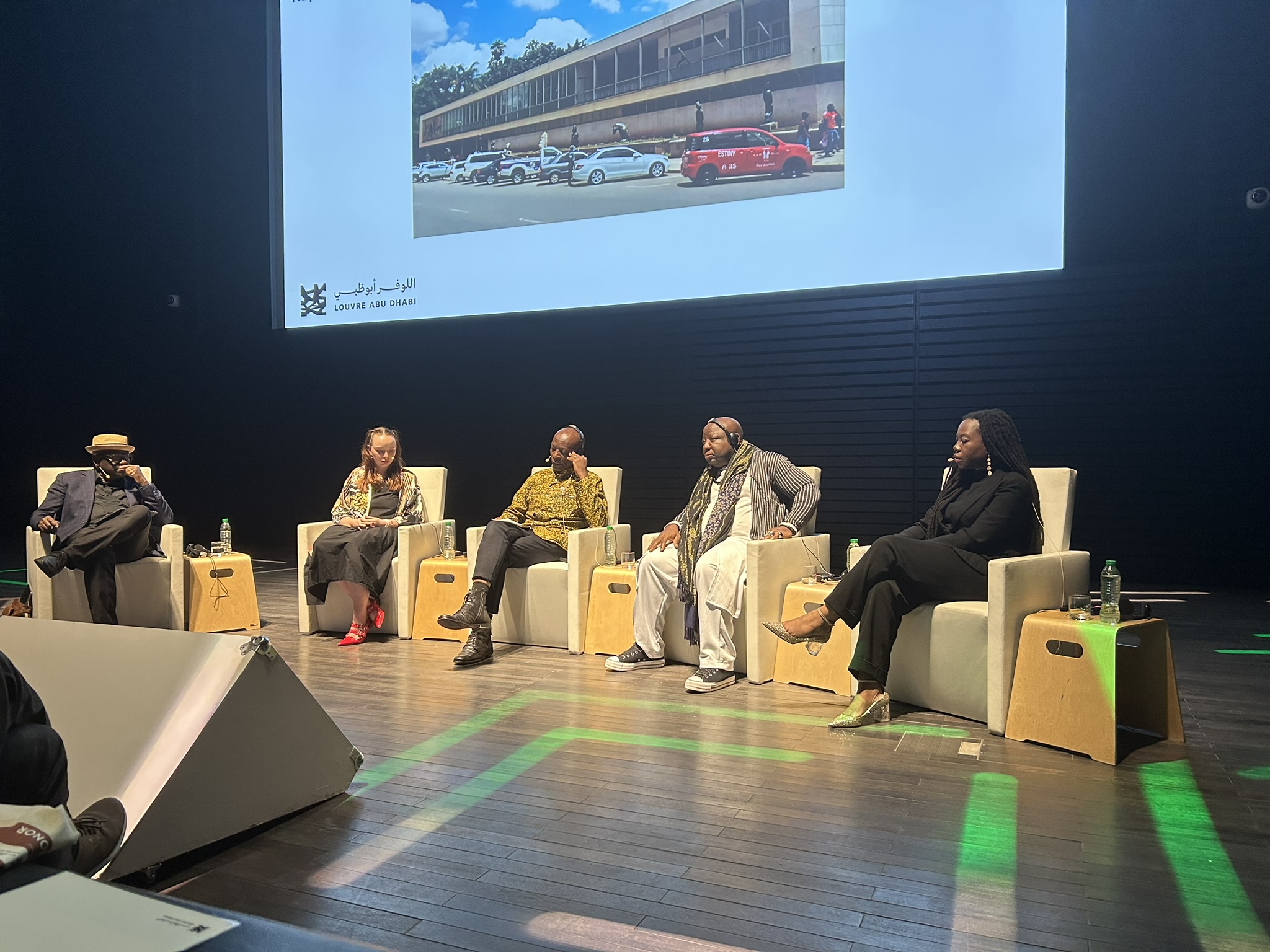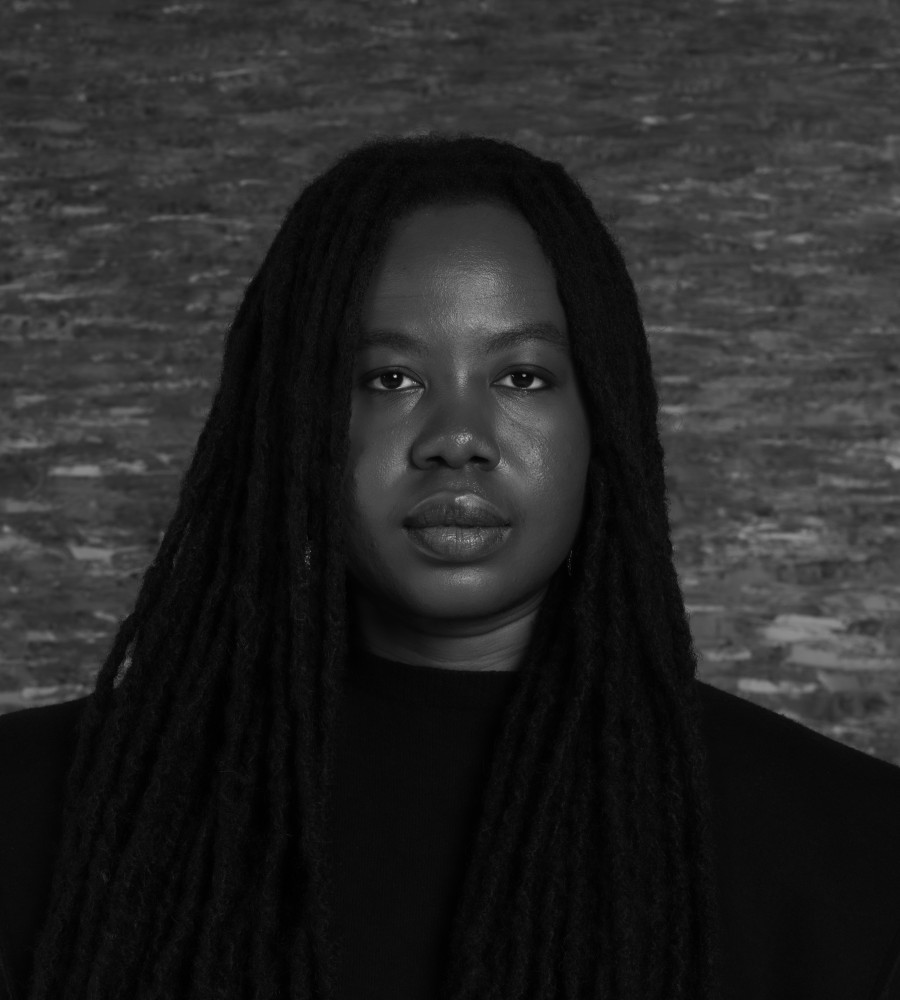Interview – Beyond the museum walls: unifying through contemporary art with Olivia Anani
Interview 3/6: Beyond the museum walls: unifying through contemporary art with Olivia Anani
As part of our ongoing interview series following the conference African Museums: Today and Tomorrow, produced by France Muséums and held at Louvre Abu Dhabi in January 2025, we engaged in a discussion with Olivia Anani.
Olivia Anani’s career spanned various roles within major institutions and collections, including auction houses such as Christie’s, Sotheby’s, Phillips and Piasa, where she directed the Department of African Modern and Contemporary Art. Her focus has been on restoring knowledge of the diverse modern schools of the African continent, from Egypt’s Mahmoud Mokhtar to Senegal’s Iba N’Diaye. She also worked on reviving the recognition of underrepresented figures, including women such as Younousse Sèye, who remains an influential yet overlooked painter in the history of continent. Through this, she has sought to contribute to a broader and more inclusive understanding of African art history.
Today, she holds the position of Executive Secretary to the prefiguration committee of the Museum of Contemporary Arts in Cotonou (MACC) in Benin.
Could you tell us more about the creation of the future Contemporary Art Museum in Cotonou and your involvement in this project?
The project is still in its early stages. I coordinate and advise on matters related to the vision for the museum, the structure of the institution to come both from structural and curatorial/scientific aspects. We are currently discussing the building of the team and the administrative elements, as well as the partnerships to be set up for the programming of research projects, loans and exhibitions.
Paintings, sculpture, moving and still images, performance, installations and conceptual works will be displayed in the museum, as vessels to share a narrative and a vision of Africa’s connection to the rest of the world throughout history, via the voice of contemporary artists. Every continent is of interest to us, especially the countries of the global south, from Latin America to Asia and the Middle East.
Through this museum, we seek to highlight Africa’s historical and contemporary interconnectedness with the world, using contemporary artistic practices as a lens to tell these stories.
How could Contemporary Art and artists contribute to reshaping the role and positioning of cultural institutions in Africa within global dynamics?
Contemporary art and artists have the ability to create connections and unify communities, especially in Africa where the artist has always had a historic and key ritual role, related to communication with the invisible, the divine… They were the memory of the collective body.
We can take the exemple of griots, custodians of the oral tradition. They act as a link between the community of the living and the ancestors. Blacksmiths or metalsmiths and sculptors have long held an almost divine status in Africa, as they make powerful objects used in rites and rituals.
Over time, with the global migration of people from Africa to the rest of the world, this role transformed and its importance was sometimes diluted in other aspects. The mission of the artist has shifted—moving from a primarily sacred and ritualistic function central to the community to one that often centers on aesthetics and the documentation of contemporary life, a testimony of a moment in time.
But what we have been observing for the past few years is that artists are going back to their primal mission as medium connecting realms and communities. Not only in Africa, but in the African diaspora, as well as in Asia, South America, Australia, where there is renewed interest in indigenous artistic traditions.
For instance, I recently had the chance to visit the Stellenbosch Triennale in South Africa, where curator Khanyisile Mbongwa has worked with shamans, musicians, and practitioners, to highlight the healing properties of artistic expression.
These practices emphasize that art does not have to be confined to museum walls but is embedded in social life, playing a crucial role in community-building and collective well-being. In this way, artists are not merely responding to institutional frameworks; they are actively redefining what a cultural institution can be.
How can contemporary art help us question inherited narratives and build more inclusive spaces for exchange, learning, and healing?
Africa has always been part of the global art canon, yet traditional Western narratives have often limited or overlooked its contributions. The canon, as it has been historically constructed, was shaped by imperialist ideologies that selectively curated knowledge to fit a particular worldview. Nowadays, I do think we understand that everyone has something to give, and that it is in our interest to learn from each other, regardless of our position on the map. “North-South” conversations are not considered through the prism of hierarchy anymore which is liberating: going beyond that obsolete pattern allows us to have many more conversations between people from all walks of life, whether from the North or the South. The objective is not simply to secure a seat at the table but to reimagine the table itself.
It is extremely exciting to be at this moment when we are restarting to learn from each other on an equal footing. We are given the collective opportunity to rethink artistic practice and artistic institutions as well as the role they can play in our society.
Contemporary art also happens to be the most transdisciplinary area of expertise that can ever be because the artists are interested in every other aspect of the production of knowledge: literature, philosophy, archeology, STEMs, agriculture, etc. Artists such as the Franco-Beninese Marc Johnson, but also Tabitha Rezaire or Ali Cherri embody this interconnected approach in their work.
Thinking about contemporary art as a way to bring people together, connecting communities through the exploration of diverse forms of knowledge, holds healing potential. In times of uncertainty, how can artists reclaim the restorative power of their practice? This is a question we intend to explore in our future museum.
Why are these spaces for dialogue, like the Abu Dhabi conference, so important?
Despite our genuine interest in multiple forms of knowledge, the reality of our professions as well as life choices mean that we must focus on specific fields of study and expertise and we spend a lot of time head down, trying to advance our respective tasks.
In that regard, it is important that we find moments to gather collectively, to sit back, and make a survey of all the knowledge and information each of us have accumulated over time and then share our respective findings to enrich each other’s work and practices.
Those events also are an important part of the constitution of a global archive of knowledge related to our various disciplines and areas of research. That way, the next generations of practitioners can also learn from those and perhaps find old solutions to new problems.
To learn more about the conference produced by France Muséums for Louvre Abu Dhabi


